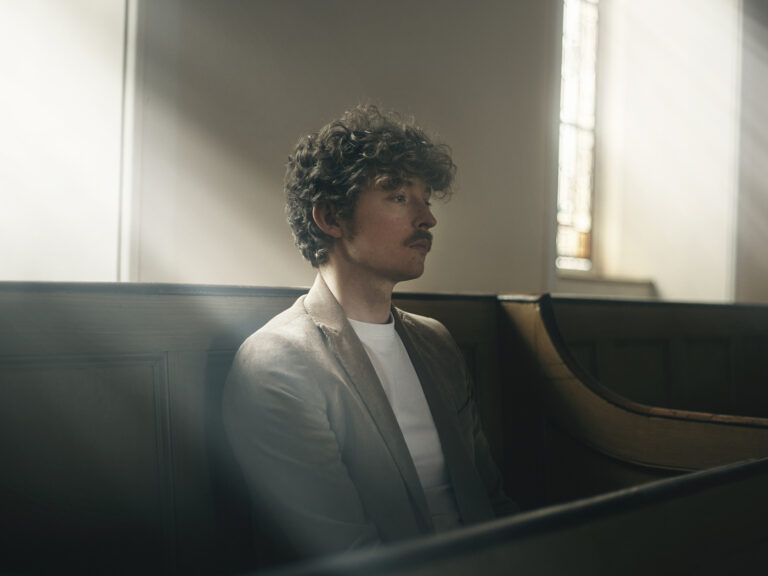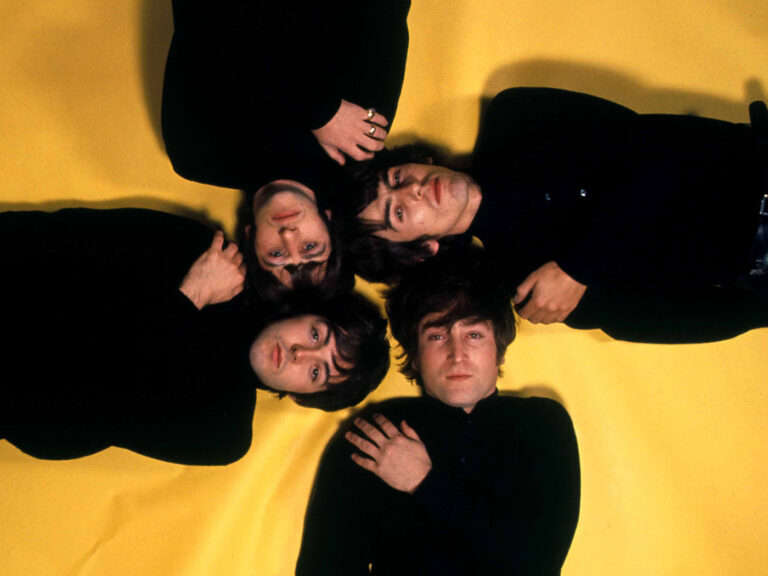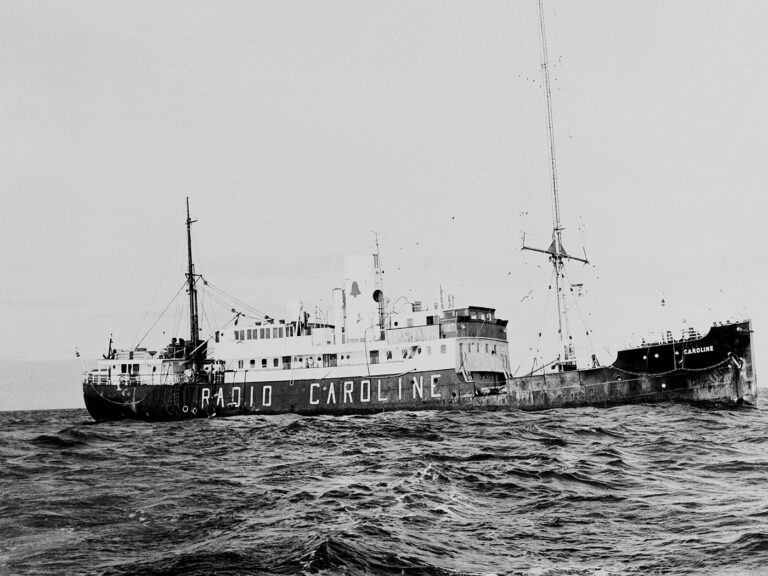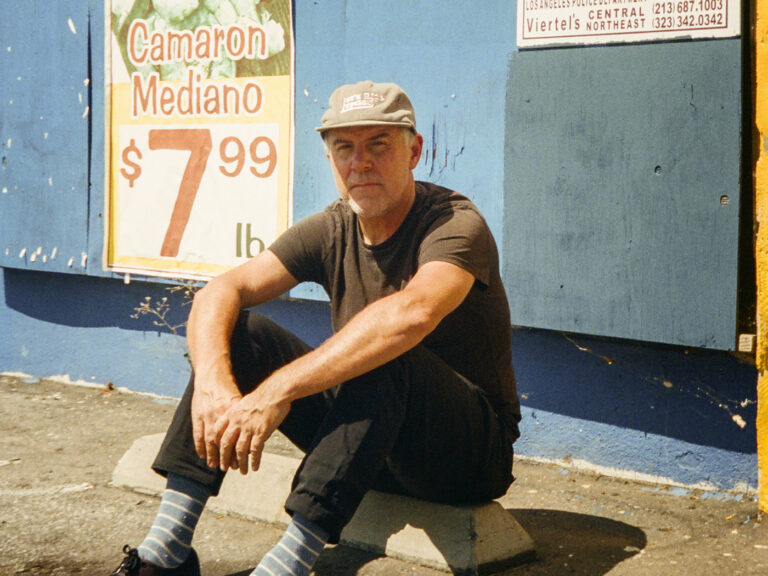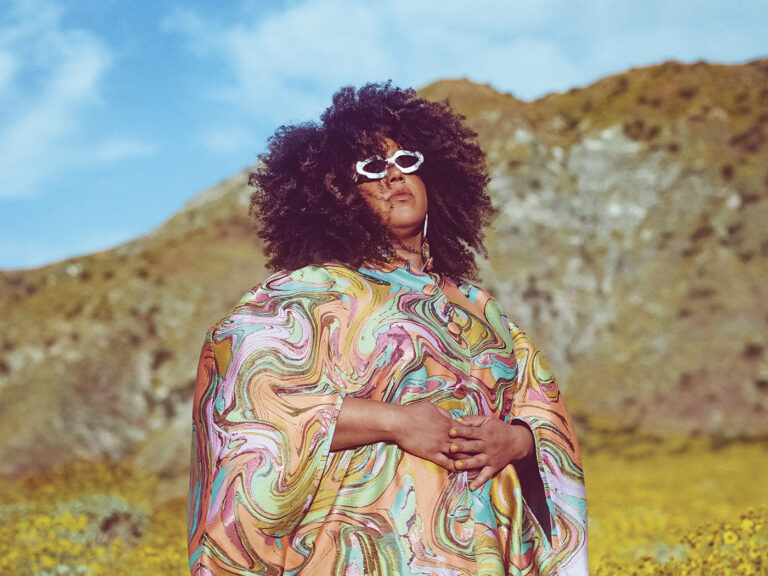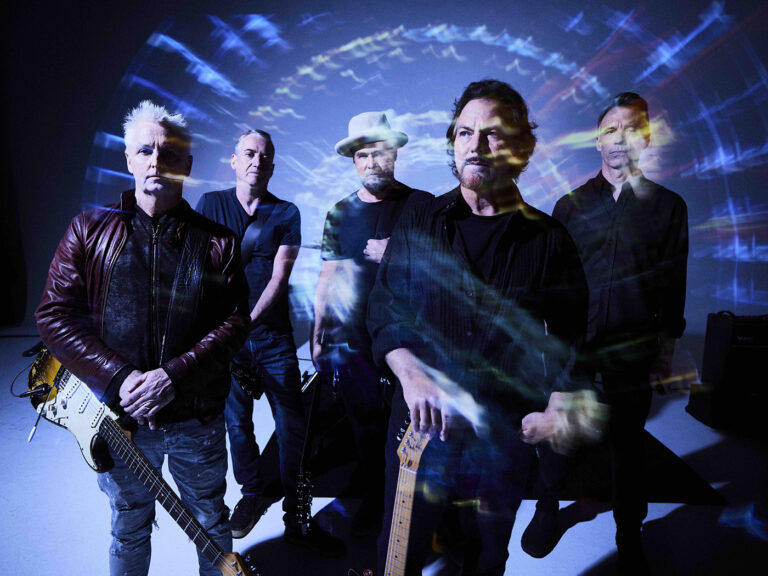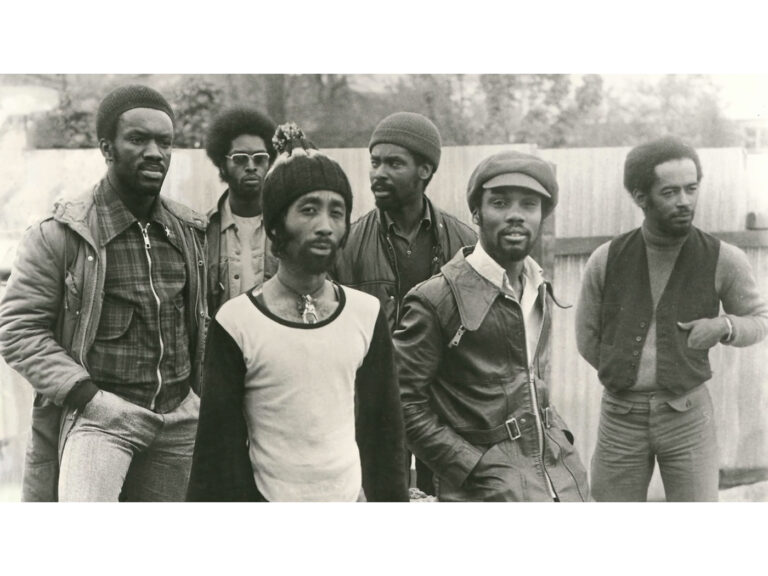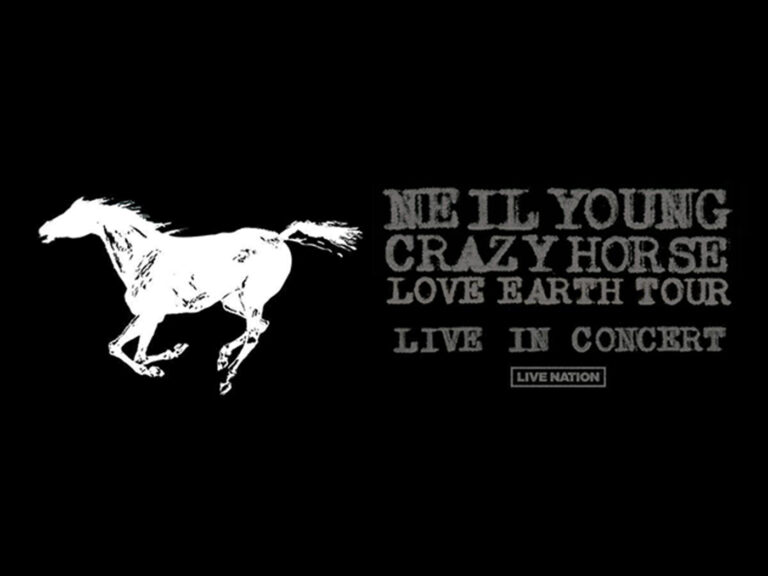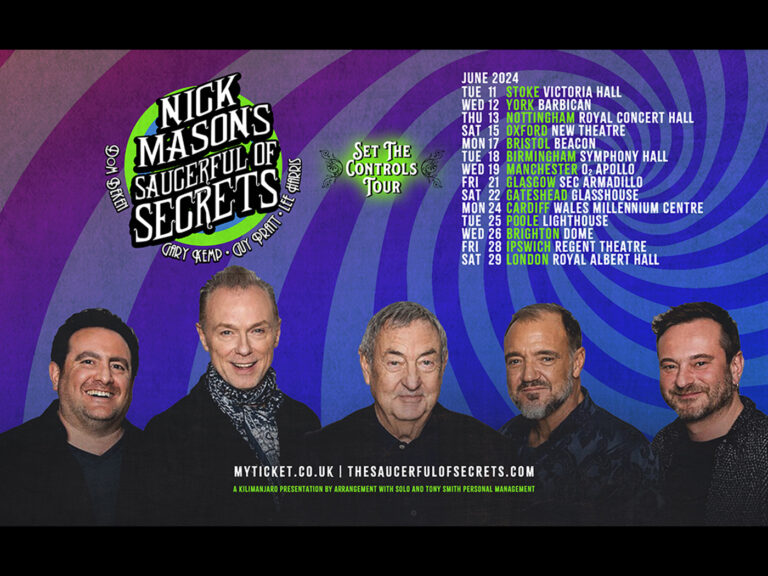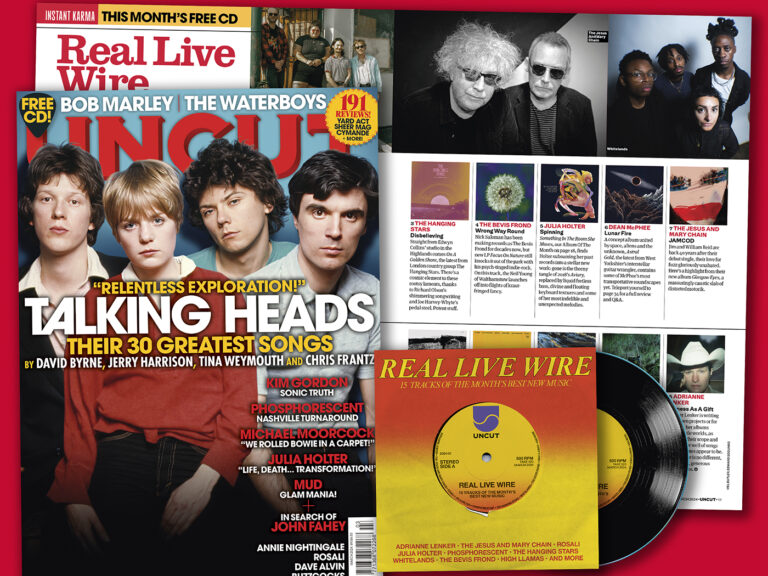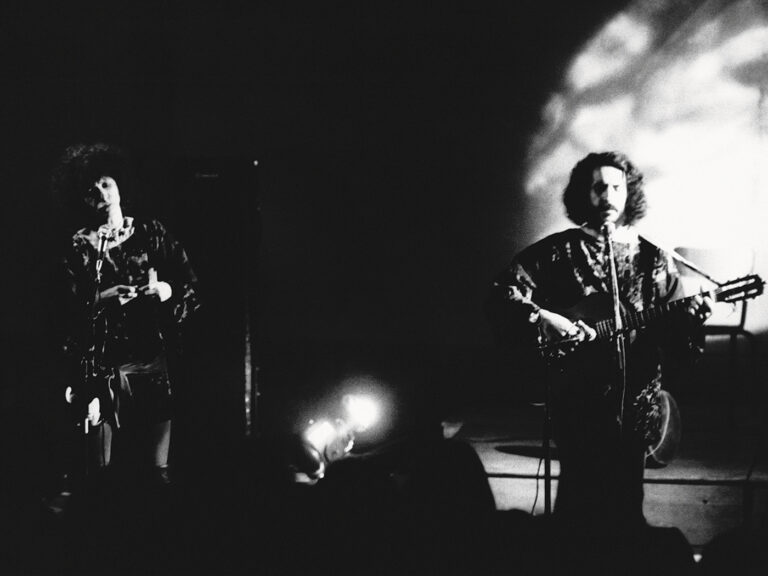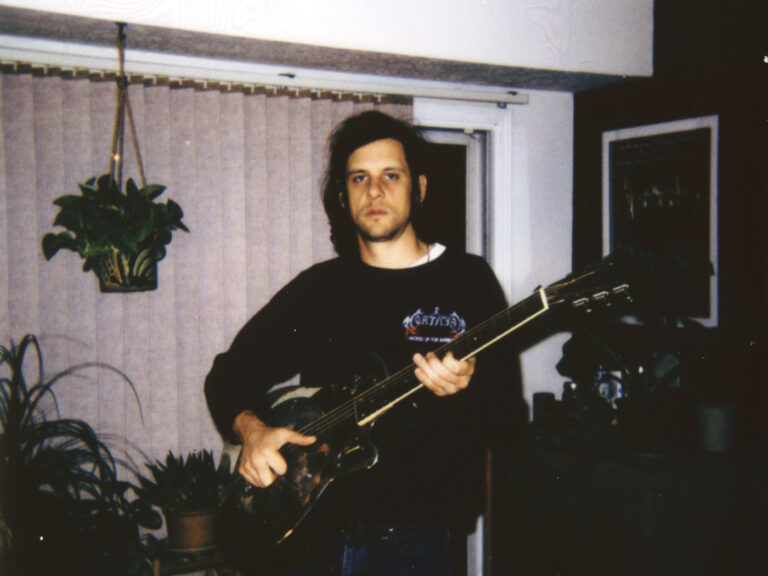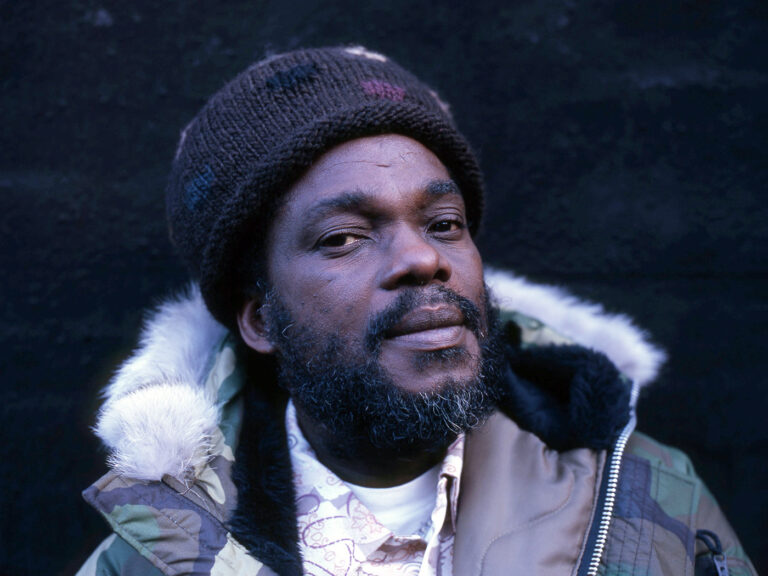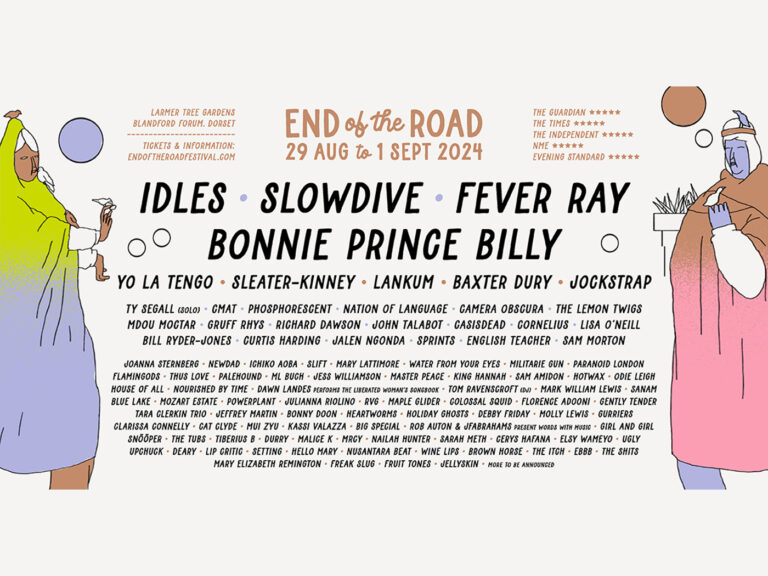With news that Pearl Jam are releasing Dark Matter, their 12th studio album, on April 19, we dip back into the Uncut archives for this Album By Album feature from Take 109, from June 2006.
Pearl Jam are, along with Mudhoney, grunge’s great survivors. Guitarist Stone Gossard and bassist Jeff Ament were in the Seattle genre’s first band, Green River, then Mother Love Bone, whose singer Andy Wood, in what would become a Seattle disease, fatally overdosed on heroin on the verge of success. But when charismatic, beautiful, tortured singer Eddie Vedder joined the pair in 1990, alongside co-guitarist Mike McCready and a succession of drummers (Soundgarden’s Matt Cameron took the seat with 2000’s Binaural), Pearl Jam swiftly became America’s biggest rock band. Sometimes sneered at in the UK for perceived self-pity, in the US Vedder’s sympathetic lyrics of teen sufferation made him a generational figurehead second only to Kurt Cobain. Later refusal to release singles, videos or even tour for a time shed millions of fans. But their albums have actually improved, seeing them bloom into a classic, morally concerned, spiritually questing American band.
When Uncut visits them at their Seattle office, founders Gossard and Ament pair up, then McCready and Cameron. Vedder sits alone in a shadowy, candle-lit alcove, his dog at his feet, and talks warmly in his sonorous voice of the grunge days, Kurt’s death, and how and why Pearl Jam are still here.
TALKING HEADS ARE ON THE COVER OF THE NEW UNCUT – HAVE A COPY SENT STRAIGHT TO YOUR HOME
TEN
Epic, 1991
Released in Nevermind’s wake, the more traditional hard rock of Pearl Jam’s debut was initially derided by Cobain (he later retracted). But teen suicide smash ìJeremyî, a triumphant Lollapalooza slot and a cameo in Cameron Crowe’s Seattle movie Singles helped shift 10 million
AMENT: The first week that we played with Ed, we knew it was on. It was like a second chance. Because up to that point, I was in limbo, man. I was thinking that somebody had some big plan for me, and that Andy dying was part of the plan. When Ed turned up and we started playing those songs, it was like, ‘This is what I’m supposed to do.’
GOSSARD: We went from playing two Seattle clubs a year in front of 50 people to touring with the Chilli Peppers in front of 2000 people every night, and actually having magazines wanting to talk to us. There’s 11, 12 years before that where if any one of those things had happened it would have been the greatest year of your life. But I was just thinking, we’ve gotta hold it together, with the stress of knowing what happened to Mother Love Bone. I didn’t enjoy it until recently.
McCREADY: It was all very exciting, all the band’s cylinders were firing. This is what I’d been dreaming about since I was 11 years old and I got into Kiss. It was brand new. We were just beginning.
CAMERON: Ten was exploding in the charts. The grunge phenomenon was something we’d never anticipated in Seattle. Suddenly there were cultural ramifications to what we were doing, which we didn’t feel within ourselves. Once Nirvana started to take over, it became a post-Nevermind world. No-one wanted to be left in the dust. There was this unspoken competition.
VEDDER: Any phenomenon that extreme is going to have positives and negatives. How much rich food can you eat? The first two mouthfuls taste great, then you’re vomiting for days. It had a global effect which in the end I think we’re all proud of. I think Kris [Novoselic] and Dave [Grohl] are absolutely proud of it. I liked the idea that women were going to clubs with tattered sweaters that allowed them to be who they were, and not with bustiers and leather pants. There wasn’t a mandate, I don’t think. There was just this natural evolution into self-expression and independence and self-worth, based on people understanding their isolation, and being able to share it through the music. I think what was interesting about that first year is how quickly the feeling of excitement changed. It went from going downhill, and thinking, ‘Oh, this is great, we’re finally getting some speed, to – we’re gonna fuckin’ die.’
Vs.
Epic, 1993
This sold a million in its first week, five times Nirvana’s In Utero, and sharp punk punches like “Animal” improved on their debut. But Vedder agonised about the staggering scale of success on stage, cutting a graceless figure to some
McCREADY: We’d had a wave of emotions at selling millions, from gratitude to confusion to fright. The energy of what we’d gone through is on that record. It’s hard-hitting and immediate, on songs like “Go”. There was some pressure, but the songs were so good, we felt like it was going to do okay. Then things just exploded again. I think we had a better hold of it. But maybe not.
AMENT: I think the Vs. era was a pretty dark time. We had all kinds of battles going on at that point.
GOSSARD: It was the transition of Ed asserting himself in the band. In the beginning, Jeff and I put the deal together, we had the relationships in the record business. But Ed was realising, ‘Wow, I’m the centrepiece of this thing that’s sold fucking 10 million records. And I’ve gotta have my hand on the wheel.’
CAMERON: It’s difficult to complain when you’re successful. That’s always been the Seattle perception, that we’re all just a bunch of whiney bitches. We’re the Choke Central city of the world. And to a degree that’s true.
VEDDER: When you’re up there, you fall into things that you think a rock star should be. It was a struggle. But I do think I was reacting to things as a human being. Not like a celebrity non-human, or a prop put up there by the corporate mainstream. Those are difficult situations, especially at that time, to have been graceful in. I mean, putting a gun to your head isn’t graceful either. But that was certainly one approach.
VITALOGY
Epic, 1994
Released a week early on vinyl (also fetishised on “Spin the Black Circle”), this saw Pearl Jam pull free of grunge into a more relaxed rock classicism. Cobain committed suicide soon after its first sessions, on March 4 1994
McCREADY: I think we were on tour when Kurt killed himself. I remember that, because Ed destroyed a hotel room.
VEDDER: It affected me in ways that are just endless. I normally don’t talk about it too much, in respect to Kris and Dave. Because those feelings are still very alive in all of us. The positives and the negatives. It seemed like it was such an extreme act, and moment, and some kind of insane resolution. It seemed like that was just going to change things in the same way that I thought it would when Princess Diana was killed and the paparazzi were involved. It changed music. But it didn’t change the level of understanding about people to artists. I thought it would. We retreated after that, for survival.
AMENT: If you look at Kurt killing himself and not being able to deal with the pressures of what he became, Ed related to that in a big way. In that period I was feeling more for Dave and Kris, because I was more like them. This is crazy, but maybe six months after Kurt died, a friend and I were going snowboarding, and we got in a car wreck. I thought we were dead. I got out, look back, the car’s upside down, it’s smoking, snow’s coming down. And the first person that turned up was Kris, who I hadn’t seen since Kurt died. I was like, ‘I am fucking dead.’ It was like the biggest hallucination I’ve ever had in my life. He pulled up and he goes, [stoner voice] ‘Hey, Jeff – what’s u-up?’ I thought he was up in heaven visiting Kurt. And that that’s where we were.
GOSSARD: Oh my God, I didn’t know that. There was something in the air then. Even lyrically, in one session we wrote “Dead Man Walking”, “Immortality”, “Nothingman” – all three could have resonance with Kurt. It’s because Ed had been through enough to recognise what Kurt felt, in terms of – ‘I’ve got this fucking huge thing going, and I don’t know if I can do it, and it can take you somewhere you don’t want to go, and how do you get off, how do you control it?’ We were still at the stage where we were blind to the potential of the situation we’re at now – that of course, we can just go home. All we’d done was work our asses off for 15 years, and then it happens, and it’s like, wow, nobody seems to be very happy here. It’s all falling apart.
Vitalogy was a real nervous time for me, because Ed starting to write a lot more songs, and I was feeling disconnected from that process. Simplicity scared me when we made it. I wanted more riffs, more complexity, more Zeppelin. I was like, I don’t know if I wanna play someone else’s songs.
McCREADY: I was pretty fucked up then, on drugs, and drinking. I have a real blurry vision of that time – I don’t remember most of it, you know. It’s this weird dark period of my life.
NO CODE
Epic, 1996
Released as the band’s bitter fight with Ticketmaster over their price-inflating near-monopoly on US concert ticketing saw touring grind to a halt, this more contemplative, experimental record felt like an abdication from audience expectations. It would be their last really big seller.
GOSSARD: Ed was pushing us as a band to say, we can be small. A song doesn’t have to have this enormous impact, Ed doesn’t have to scream his head off, it’s about something else than someone might expect from Ten.
VEDDER: When it came to the songs on that record, maybe we were indulgent in a way where we just didn’t give a fuck. If we wanted to keep the momentum of the group going in the context of all the other music that was out there at the time, No Code should’ve been a heavier record. But we had to get it out of our system.
McCREADY: It felt like a left-turn when I wanted to go straight back to rocking. Part of me thought the album cover was better than the album itself. We were all on different wavelengths then. The band were travelling by plane, and Ed was driving around, doing his own radio show after a three-hour gig, cold and sweaty in a van. Which is crazy. I have pictures of four of us getting on a plane – where the hell’s Ed? It got to the point where he got sick, at a free show in Golden Gate Park where 50,000 people showed up. It was a fucking nightmare. Neil Young jammed with us for a few songs, and people were still pissed. We had a big three-hour meeting the next day, and I remember Stone going to Ed, point blank: ëDo you still want to be in this band?’ Fortunately, he did.
BINAURAL
Epic, 2000
Partly inspired by the anti-globalisation riots that flared in Seattle as they recorded it, this re-integrated their rocking and sensitive sides on career highs like “Insignificance”. But nine fans being crushed to death as they played Denmark’s Roskilde Festival on June 30 2000 overshadowed its release.
AMENT: We were in the studio when the riot happened. You could stand out in the sidewalk and hear it going on. At one point, I rode my bike down there, and then the crowd suddenly got big behind me, I was riding my bike through thousands of people, and I ended up getting out of there, because obviously shit was not going right. It was pretty surreal.
VEDDER: Those protests were something we had to think about, they were happening right outside our door. The interesting thing about them was the way they were handled. Why weren’t you able to walk down the streets with signs and singing? Why were there rubber bullets and tear gas from guys in shoulder pads provided by Nike? That was the beginning of realising that free speech in America was not the guaranteed right we thought it was.
McCREADY: Then Roskilde coloured all of our lives, I think. It’s a void, or a terrible tragedy, that I will never forget. I’ve never been through anything like that before, and I never want to again.
CAMERON: It’s the last thing you would ever expect, and we saw it happen. I don’t think we all went into deep depression for a great length of time. We saw it as the tragic accident that it was. But it was always associated with our show by the media, and that wasn’t nice to go through.
PEARL JAM
J, 2006
Partly a continuation of the overtly politicised, post-9/11 Riot Act (2002), anti-war sentiment here alternates with songs like “Big Wave”, where Vedder seems to want to get away from the whole mess. Their hardest rocking set for a decade
GOSSARD: This record has a little bit of AC/DC or the Stones. We can play it top to bottom live, we don’t have to worry about the tabla part. The lyrics seem to run the full gamut. They’re politically engaged and topical, and then ìSevered Handî’s about somebody just indulging themselves to the ultimate degree. You don’t get that out of Ed a lot.
VEDDER: It’s healthy to limit yourself when you can to things that actually concern you. I mean really – this might be dangerous to say – but on a certain level, we could look at the war where it doesn’t affect us one stitch. It’s healthy to step back from that sometimes, to get out in the ocean and surf and clear my head. Life offers you situations where you can’t step back, where your best friend is dying and you have to be living next to the nightmare. On the other hand, it was a gift to be in a studio the day after Bush’s election. It was a mental health issue at that point.
Musically, we know we’re going down roads that have already been cut, by The Who, or Springsteen or The Stooges or Velvet Underground or Talking Heads, or even some of the side-paths cut by Sonic Youth or Fugazi. And I think at this point we are trying to keep that spirit and legacy alive. We want to represent that.
CAMERON: The initial blast of Pearl Jam came at a time when there was a palpable groundswell, there was a real event that happened. People wanted to hear something different, and the band’s association with that initial realism in rock has carried over. Not necessarily in the music industry. They probably think we’re just a bunch of old greaseballs, and I love that. I love that they don’t respect us, and they don’t think we have anything left in our tank. It’s a great feeling that we’re being perceived as underdogs, when we’re still really successful.
GOSSARD: I think when you sell 10 million records, that’s such a crazy number. I don’t think anyone can keep that going. For Ed to show us that we could actually pull back and take control of the situation was a huge transition. Maybe we’ll end up making another record that people do relate to in a big way like Ten. Or maybe we’ll make some records and they’ll do whatever they do, and we’ll just be a live band.
VEDDER: Did pulling back save my life? I’ve fallen off a number of cliffs since. If they had’ve been higher, I could have died. Yes.



